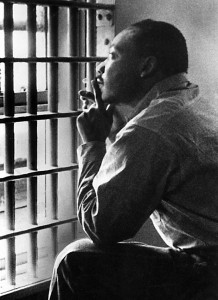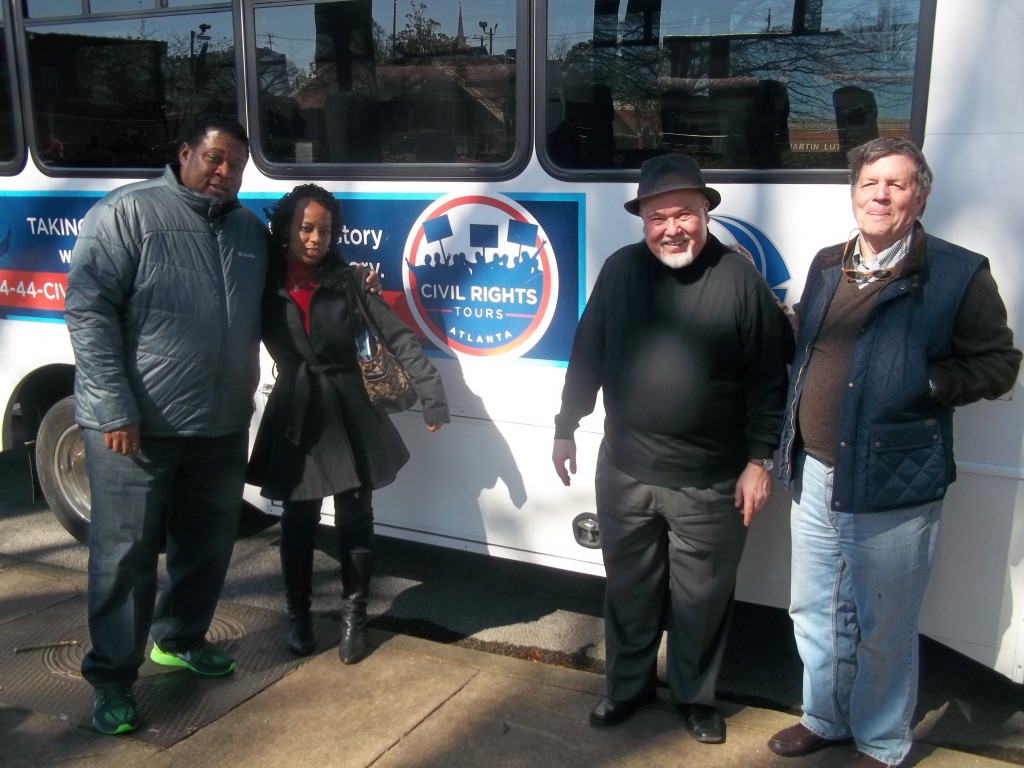 (me and my hubby & Tom Houck and another tour goer)
(me and my hubby & Tom Houck and another tour goer)
Editor’s Note: I originally wrote this post in 2016, but in honor of the Dr. Martin Luther King Jr. holiday today, I thought I would share it again. Enjoy 🙂
Hello World,
Last week my husband Robert and I were thinking about what we could do to celebrate the sixth anniversary of our first date yesterday. As I was listening to 1380AM WAOK on the way home from work on Wednesday, I realized I had a fun and educational option. Derrick Boazman host of “Too Much Truth” was interviewing Tom Houck whom I had never heard of before. Tom, a white man, was the driver of Dr. King and his family for several months. In a gruff, hearty voice likely emboldened because of the precious history he possesses, Tom described how being kicked out of high school in Jacksonville, Florida for merely participating in a Selma march in 1965 eventually led to being in the inner sanctum of the very leader of the Civil Rights Movement as Dr. Martin Luther King Jr.’s driver.
In 1966, Tom’s civil rights activism brought him to Atlanta to work for the Southern Christian Leadership Conference (SCLC). In one of those fortuitous moments that forever changes someone’s life, Dr. King saw Tom across the street from the SCLC where he had gone to make a call on the pay phone and invited the 19-year-old to have lunch with him and his family. That lunch led to him being asked to drive for the King Family. Tom describes his experiences as their driver as a part of his Civil Rights Tour, a bus tour in which Tom takes people to see the historic sites in Atlanta that provided the landscape of the capital of the Civil Rights Movement.
At the end of the conversation, Tom offered two tickets to the first person who e-mailed him the answer to this question: What was Dr. Martin Luther King Jr.’s real first name. I was literally pulling into my driveway when I heard him ask the question. I parked, unlocked my front door and ran to my computer, hurriedly e-mailing him the answer: Michael. For the first five years of Dr. King’s life, his name was Michael. However, when his father Michael King Sr. changed his name to Martin Luther King Sr. after becoming inspired by Martin Luther, his son, who was Michael King Jr., became Martin Luther King Jr. I nearly fell off of my bed when I received an e-mail later that evening from Tom letting me know that I had won the tickets! I told my husband we could celebrate our history as a couple by celebrating the history of our beloved city. He agreed that it would be a great way to celebrate our first date anniversary!
Dr. King’s first home is in the Old Fourth Ward area of Atlanta which was once known as Shermantown after General Sherman took over the area during the Civil War. The home is on Auburn Avenue known as Sweet Auburn, but I didn’t know that Auburn Avenue was once Wheat Street. However, the name of the street was later changed because Wheat Street was thought to be too rural of a name for a metropolitan street. Yes, Sweet Wheat doesn’t sound as cool for sure! But that explains the name of the historical Wheat Street Baptist Church on Auburn Avenue. Wheat Street Baptist Church was the site of the church scenes filmed in the movie “Selma,” Tom told us.
In the beginning of the tour, we went by Dr. King’s elementary school Howard Elementary School. The school building, which is vacant, later became a high school which has notable graduates including Maynard Jackson, Atlanta’s first black mayor; Walt Frazier and Vernon Jordan. Tom also took us to the SNCC Freedom House. Freedom Houses were designated places where civil rights workers could retreat and reside.
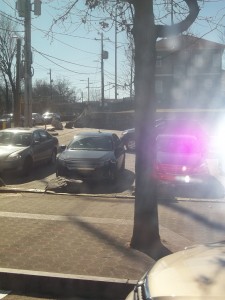 The site of the pay phone where Tom met Dr. King…
The site of the pay phone where Tom met Dr. King…
 Tom met Dr. King across the street of the SCLC headquarters, which I took a picture of from the bus…Not the best picture, but you get the idea hopefully…
Tom met Dr. King across the street of the SCLC headquarters, which I took a picture of from the bus…Not the best picture, but you get the idea hopefully…
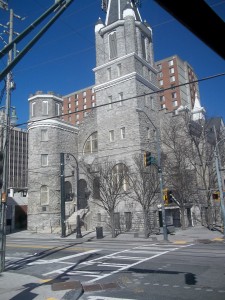 Morris Brown College, the only HBCU founded by black people, was organized in the basement of Big Bethel AME Church, which is located in the Sweet Auburn district…Civil rights leader Hosea Williams and Derrick Bozeman are Morris Brown College graduates…
Morris Brown College, the only HBCU founded by black people, was organized in the basement of Big Bethel AME Church, which is located in the Sweet Auburn district…Civil rights leader Hosea Williams and Derrick Bozeman are Morris Brown College graduates…
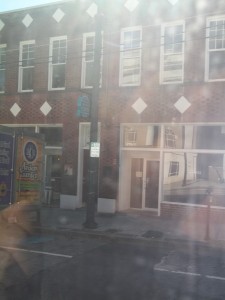 See that blue sign? It is the sign for the original site of the Atlanta Daily World, the oldest black newspaper in the city…It was once a Republican newspaper as blacks were mostly Republican years ago since most segregationists were Democrats…
See that blue sign? It is the sign for the original site of the Atlanta Daily World, the oldest black newspaper in the city…It was once a Republican newspaper as blacks were mostly Republican years ago since most segregationists were Democrats…
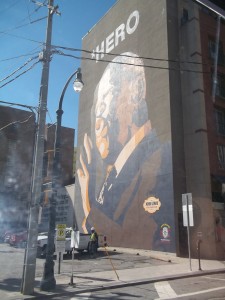 A Loss Prevention Hero series mural honoring Congressman John Lewis…
A Loss Prevention Hero series mural honoring Congressman John Lewis…
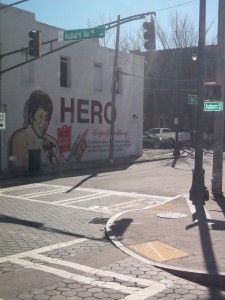 The second The Loss Prevention Hero series mural honoring Mrs. Evelyn Gibson Lowery, the deceased wife of Rev. Joseph Lowery. Mrs. Lowery founded SCLC/Women’s Organizational Movement for Equality Now, Inc.
The second The Loss Prevention Hero series mural honoring Mrs. Evelyn Gibson Lowery, the deceased wife of Rev. Joseph Lowery. Mrs. Lowery founded SCLC/Women’s Organizational Movement for Equality Now, Inc.
Although it wasn’t an official part of the tour, Tom told us that Citizens Trust Bank, which was founded by black businessman Heman Perry, on Auburn Avenue, was where he received his first car loan! AND Daddy King, who was on the bank’s board of directors, co-signed the loan!!!
Before we left the Sweet Auburn district, we learned about John Wesley Dobbs, a rail clerk who was unofficially named the mayor of Sweet Auburn because of his work to achieve equality for black people…Seemingly in homage to Dobbs, Atlanta’s public schools were integrated on the day of this death, August 30, 1961, Tom told us…Above is a statue honoring Dobbs, who is the grandfather of Maynard Jackson…All of his six daughters graduated from Spelman College. They are reported to be the largest group of sisters to graduate from the school…Incidentally, I interviewed Dr. June Dobbs Butts, the youngest of the sisters and a sex therapist, for an UPSCALE magazine article I wrote years ago…
We rode by the now defunct Terminal Station, which was once a prominent train station in the city. Atlanta was once named Terminus which I originally learned after watching “The Walking Dead,” which is back tonight!!! Yay!!! And before Terminus, Atlanta was known as Marthasville. I cannot see Atlanta residents calling ourselves Termliens or Marthaaliens so I’m glad we changed to Atlanta because ATLlien is so doggone cool…
We passed through the Castleberry Hill District, which was revitalized by Herman J. Russell, a construction magnate…I had the opportunity to meet him just months before he passed away in 2014. He attended the National Book Club Conference while promoting his book Building Atlanta: How I Broke Through Segregation to Launch a Business Empire.”
Tom took us to Dr. King’s last home before he died which is located at 234 Sunset Avenue…
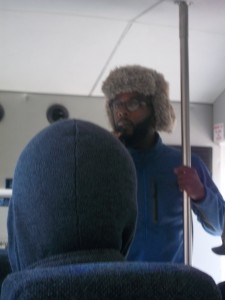 Daryl, a recent graduate of Clark Atlanta University, sang freedom songs as we passed by some of the historical stops…
Daryl, a recent graduate of Clark Atlanta University, sang freedom songs as we passed by some of the historical stops…
Along the way, we passed by Washington High School where Dr. King graduated from when he was 15 years old to attend Morehouse College. I did not know that Lena Horne also attended Washington High School!
One of the stops was the home of Alonzo Herndon, who was once Atlanta’s wealthiest black man. Herndon built his fortune on his barbering business. His stately home is across the street from the home of Grace Towns Hamilton, the first black woman elected to the Georgia General Assembly. Unfortunately, her home was barely visible due to the overgrowth of weeds as well as the overall decay of the structure…We also passed through the Atlanta University Center and by the original Paschal’s Restaurant location as well as Busy Bee Café.
One of our final stops was South-View Cemetery, which is located on Jonesboro Road and was designed “to provide a respectable place for Christian burials” for all people including black people who were once not allowed to be buried in certain cemetaries. It opened on April 21, 1886. It began as 26 acres and is now over 100 acres. 80,000 people are buried there including Herman J. Russell and the wife of John Lewis, Lillian Miles Lewis. Below are pics of the graves of other important people who are also buried there…
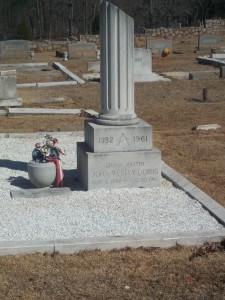 The grave site of John Wesley Dobbs
The grave site of John Wesley Dobbs
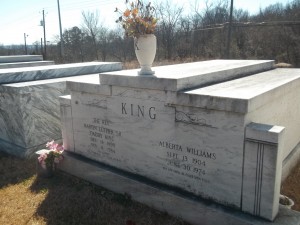 The grave sites of Daddy King and his wife Alberta King…
The grave sites of Daddy King and his wife Alberta King…
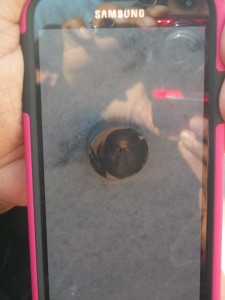 If you look at to upper left of the grave marker, you can see this tiny picture of Daddy King….
If you look at to upper left of the grave marker, you can see this tiny picture of Daddy King….
Dr. King was originally buried in South-View cemetery before his body was moved in 1970 to its current location alongside his wife at the King Center. One the way back to Auburn Avenue where we started the tour, we passed by Atlanta Federal Penitentiary. Tom told us that Marcus Garvey was imprisoned there which is interesting to me as the daughter of Jamaican immigrants.
We learned much more that I wasn’t even able to include in this already lengthy blog post!
And hopefully, you will be inspired to take a Civil Rights Tour with Tom Houck, the driver of Dr. King and his family. For more information, go to civilrightstour.com.
Enjoy your Dr. Martin Luther King Jr. holiday!
Any thoughts?
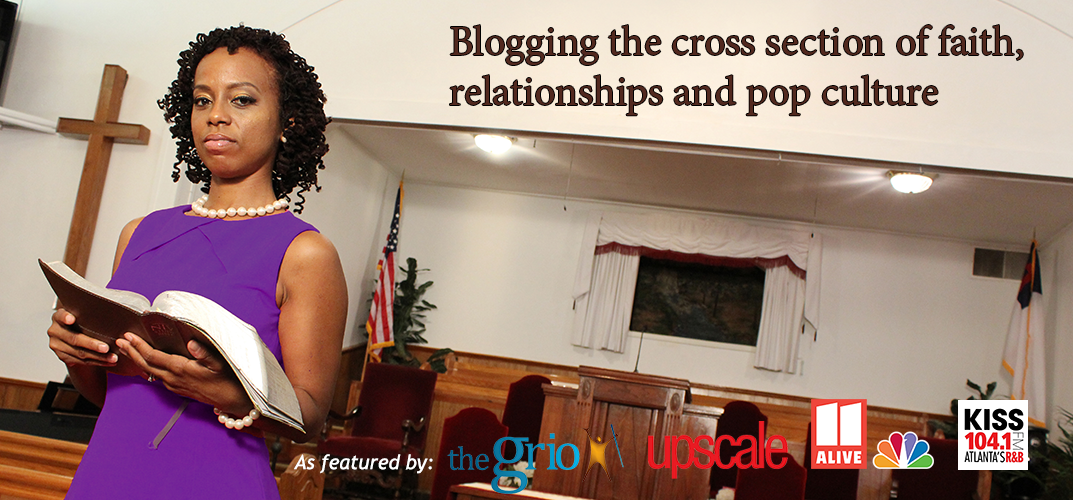

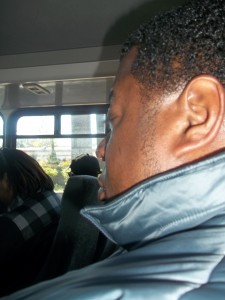
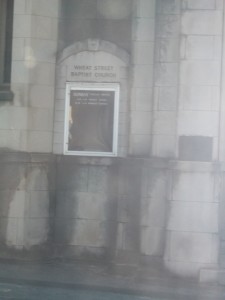
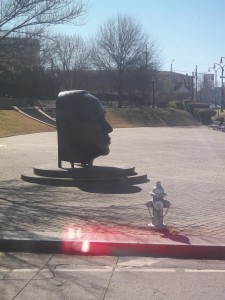
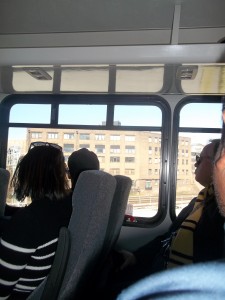

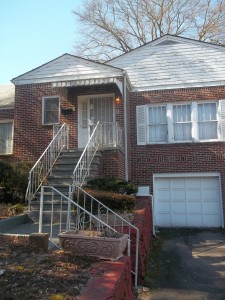
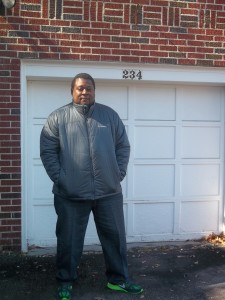
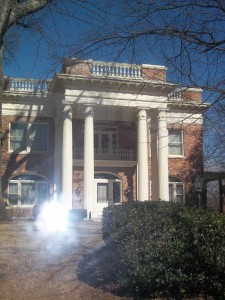
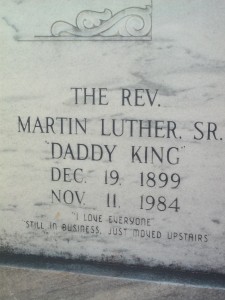
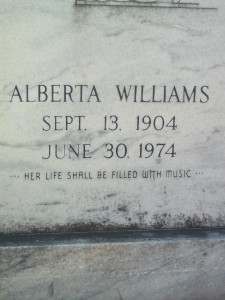
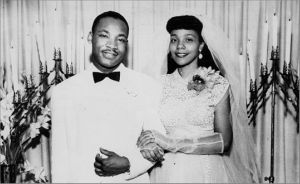
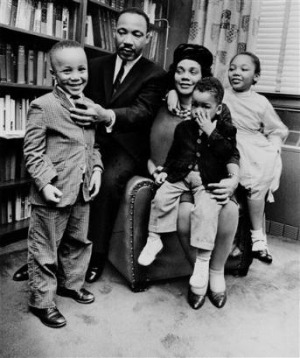
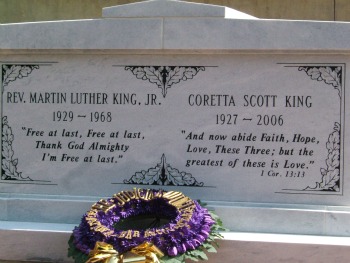

 Gilbreath, who is an award-winning journalist and author, and the executive director of communications for the Evangelical Covenant Church, wrote “
Gilbreath, who is an award-winning journalist and author, and the executive director of communications for the Evangelical Covenant Church, wrote “